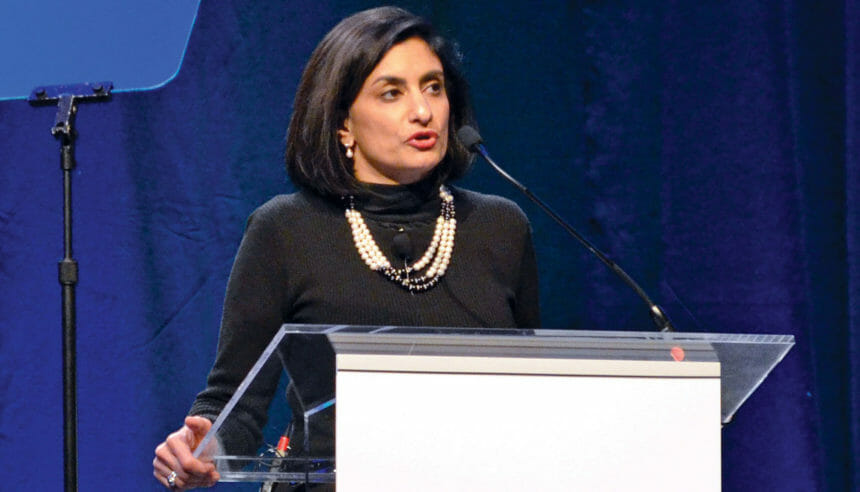
The Centers for Medicare & Medicaid Services on Friday issued new guidance meant to clarify where Medicaid beneficiaries can receive home- and community-based services as defined in a 2014 regulation, but provider advocates said they still have questions.
The HCBS final rule established new reimbursement criteria with the goal of enabling Medicaid beneficiaries to receive services in settings that are integrated into the community rather than in skilled nursing facilities. Many assisted living communities have provided HCBS to their residents through Medicaid waivers. Under the rule, however, certain settings — including locations in buildings in which inpatient institutional treatment is provided, settings in buildings on the grounds of or adjacent to a public institution, or settings that isolate individuals from the broader community — are presumed ineligible for the waiver program unless they meet a heightened standard of proof.
The guidance issued Friday, CMS said, is designed to streamline and clarify the “heightened scrutiny” process.
“Even well-intentioned policies from Washington often lack the flexibility needed to work for every state, community, setting or family,” CMS Administrator Seema Verma said in a statement. “The implementing guidance issued under the prior administration was simply too prescriptive and unfairly singled out certain settings, causing unnecessary anxiety for many beneficiaries, families and providers. We believe our revised guidance strikes the appropriate balance to protect individual choice while maintaining the integrity of home- and community-based funding.”
CMS said it developed the guidance over the past 18 months after convening a working group with state representation and also seeking feedback from providers and advocates. The National Center for Assisted Living and LeadingAge, however, told McKnight’s Senior Living that they were both pleased and puzzled after reading the document, a list of questions and answers sent in a letter to state Medicaid directors.
“NCAL is pleased to see CMS issue this additional guidance to states about the heightened scrutiny process for the HCBS Settings Rule, especially as it acknowledges that rural settings are not isolating merely because of their location,” said Lilly Hummel, NCAL’s senior director of policy. “However, we still have concerns about the lack of details regarding its plan and timeline to conduct a sampling of providers for heightened scrutiny review. Each assisted living community is unique and deserves individual review as well as the opportunity for appeal.”
The FAQs “leave beneficiaries and providers, particularly those looking to build and offer new settings, in a state of continued uncertainty for several more years,” she said. “NCAL encourages CMS to provide more information on these items to ensure assisted living and other HCBS providers are able to serve our nation’s most vulnerable.”
Brendan Flinn, LeadingAge’s director of home- and community-based services, also said that organization supports the guidance but still has some concerns.
“For example, the new document replaces a previous guidance document stating that life plan communities [also known as continuing care retirement communities, or CCRCs] do not isolate beneficiaries; however, the new guidance does not include such a provision,” he said. “Life plan communities are by nature integrated, not isolating, and we hope CMS continues to recognize this.”
The new guidance, however, Flinn said, should benefit HCBS adult day services providers and similar providers that offer services inside of an institutional setting such as a nursing home. “These providers will still need to undergo heightened scrutiny; however, we are pleased that the new guidance allows states to include considerable information about these providers and why the services they offer are in fact not institutional,” he said.
Noting a July 2020 deadline for states to submit to CMS settings identified as isolating and not completing remediation to comply with the rule, Flinn said, “LeadingAge encourages states to work quickly with their HCBS providers to identify, communicate and resolve any issues over the next year to minimize the need for heightened scrutiny.”
CMS said it is collaborating with the Administration for Community Living, also part of the Department of Health and Human Services, to develop a list of “promising practices” to remediate settings that have been identified as being isolating, to ensure compliance with the HCBS criteria.
March 2022 is the deadline by which all states and Washington, D.C., must have transition plans to ensure that settings receiving certain Medicaid funding meet federal HCBS standards. To date, 10 states have received final approval of their transition plans and 30 have received initial approval, meaning that they have met public comment, input and summary requirements but systemic or site-specific assessments have not been completed yet.



